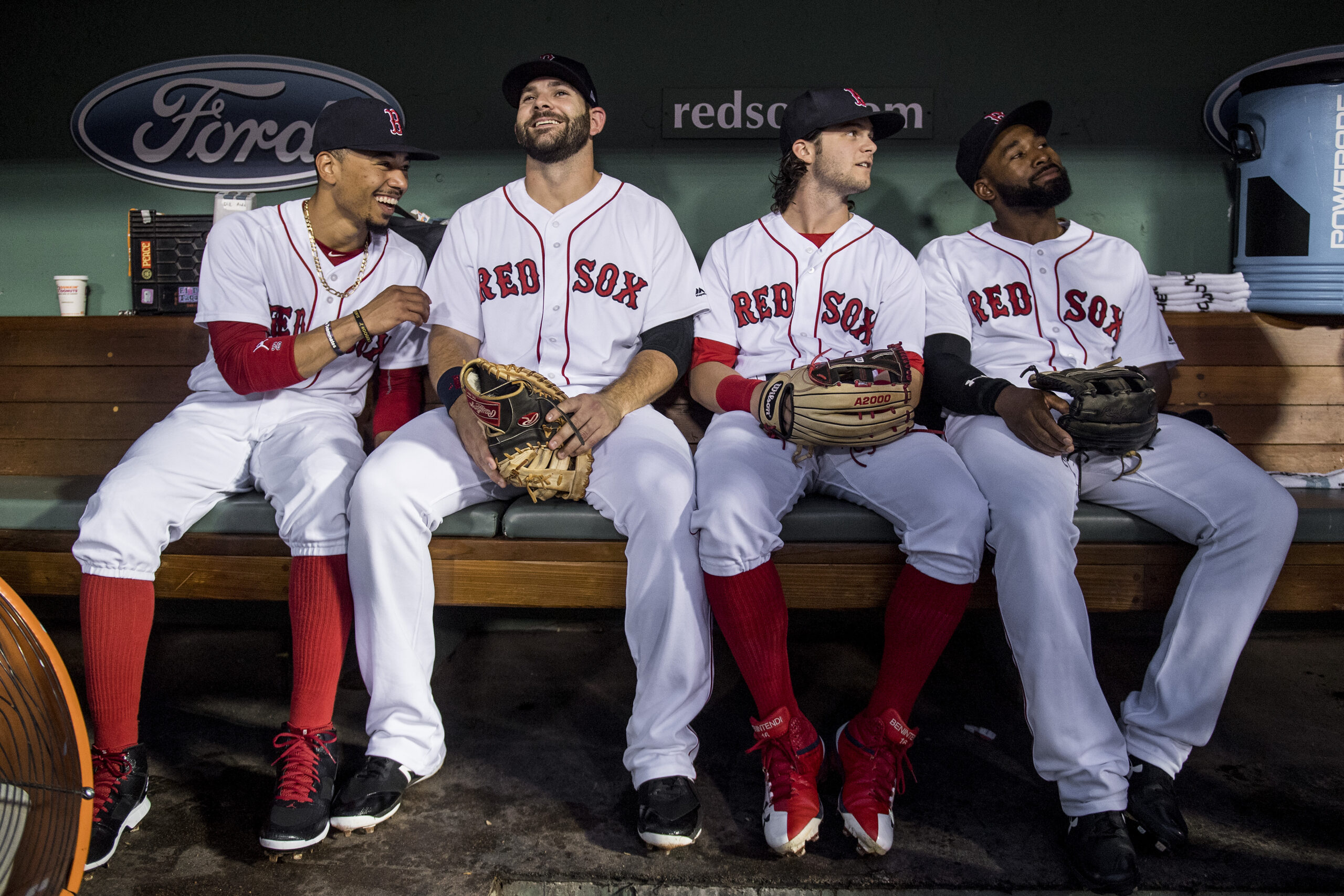Like their players on the field, the Boston Red Sox creative team is relentless – constantly pushing the envelope to find new ways to win.
They give fans an insider’s perspective, taking them into the dugout and giving them unprecedented access to their favorite players. They share stunning photos from the field in real time and capitalize on the team’s rich historical archive, dating back more than 100 years. Their content not only generates engagement, but rallies the fanbase – and even generates revenue for the team.
Watch the video to go behind the scenes with Red Sox Manager of Photography Billie Weiss and his team!
Behind the Scenes with the Storytellers
If there’s one key to the Boston Red Sox visual storytelling strategy, it’s access. Billie and his team have unique access to the players, the coaches, and the places where other media outlets can’t go. At the same time, team members across the organization have instant access to the content Billie and his team are producing, as well as a massive archive of photos dating back more than 100 years. The team’s best visual content is always at their fingertips, whether it was created seconds ago or decades ago.
Let’s take a look at how Billie and his team earned this level of access, and how it impacts the team’s visual storytelling.
It Starts at the Top
As you saw in the video, Red Sox Manager Alex Cora set the tone for the team’s visual storytelling in 2018. He started his first season in Boston with a team photo – one that included not only the players and the coaching staff, but the entire organization. From the start, he put photography in the spotlight.
His focus on photography is shared by leaders across the organization, which is a key factor in the photography team’s ability to get behind the scenes access.
“From a top down standpoint this organization really embraces imagery and embraces photography and they invest in the work that we do,” says Billie. “We’re very thankful that we’ve got people in our corner here that support and push along the things we’re trying to do.”

Familiarity
Billie has been shooting for the Red Sox for eight seasons, and he’s watched the team’s young core of players come up through the system.
“We’ve been able to kind of grow with them,” says Billie.
Over the last five years, he and his team have earned the players’ trust – something that’s harder to do on a team with a lot of trades and new players.
Shifting the Focus
Over the past eight years, Billie’s goals have shifted away from just documenting the action on the field. Now, he and his team go beyond game action, showcasing the unique personalities of the team.
“We’re trying to show the complete player, the complete athlete, the complete human that these guys are,” says Billie. “Any of their interests off the field, at home, whether its fashion or art, music, cars, in addition to their day-to-day stuff on the field, we feel like is super interesting and gives our fans a different look at our players that they wouldn’t normally get.”

A Lightning-Fast Workflow
The Boston Red Sox photographers use a real-time workflow to send photos from the camera straight to their graphic designers and social media team. Now, the best photos of the game are posted on social media within two or three minutes.
“Things are relevant in that moment and you never know when the game could change, what could happen, so you wanna get things out there immediately,” says Kelsey Doherty, Manager of Digital Media for the Red Sox.
This instant access to photos from the field has been a game changer for the Red Sox social media coverage.
“I’ve been here for two World Series now. The first was in 2013 and even within those five years the workflow has changed dramatically,” says Billie. “Back in 2013 we weren’t really transmitting live, we weren’t sending right off the camera, we weren’t tethering to ethernet. It’s a workflow that didn’t really exist back then. It’s crazy to say back then because it really wasn’t too long ago.”
Five years later, the Red Sox had a team photo from the field up on Instagram before the celebration was even over. It got 257,273 likes and 2,306 comments. Over the next 24 hours, they shared 22 images on Instagram, raking in 2,398,491 engagements. But nothing came close to the post they shared just minutes after the final out (the post with the second highest engagement rate – 196,320 engagements – was a photo of Alex Cora during the trophy presentation, which also went out in real time).
By sharing these images quickly, the Red Sox are meeting the demands of their devoted fanbase.
“We have some of the most passionate fans in baseball, which is a great thing, but with that does come the pressure of getting the content to them quickly,” says Billie, “so we’re always trying to feed the machine and get our stuff out there as quickly and as effectively as we can.”
Big Picture ROI
When you have easy access to your photos, you can do more with them.
“We’re trying to think bigger than just taking photos,” says Billie. “They’ll stand alone as photos, but how can we transform them into bigger pieces of content?”
This question led Billie and his team to create Top Shots, a series of 30 to 60 second videos highlighting the best photos from every homestand. The highly engaging content franchise is sponsored by L.L. Bean.
“When you think about revenue streams, you don’t really think about photography as a way to do that, but we’re always trying to think about how we can use images here to make those partnerships and drive revenue for our team,” says Billie. “The Boston Red Sox definitely recognize the value in the power of imagery, so we’re always trying to find ways to keep that going and keep pushing the envelope.”
Preserving History
While social media engagement and generating revenue for the team are top priorities today, preserving Red Sox history and making it easily accessible is the true, long-term return on investment.
“You’re providing fans with a visual record of this team, this franchise, and this ballpark, and I think there’s great value in that and I think it’s something that all sports organizations should invest in and support fully,” says Billie.
Today, Billie and his team use Libris not only to make gameday images available to stakeholders across the organization in real time, but also to manage and share a century’s worth of historical photos.
“For the old historical requests that come up of Ted Williams, Johnny Pesky and Carl Yastrzemski, we’re able to find those pictures very quickly and send them out to whoever’s asking – and that’s a huge thing,” says Billie.
With this easy access, the Red Sox can give new life to legendary players, iconic moments, and all nine of their World Series wins, dating back to 1903.

Saving Time Across Teams
As an added bonus, the Red Sox have made their archive self-service for the entire organization, saving time across teams.
“I would say with any given day we’re saving two to three hours of time that we would normally use searching online or searching through our databases or our servers trying to find the assets that we need,” says Billie, who used to field image requests every day.
Now, team members can run a quick search for a photo and download exactly what they need, whether it was taken in 2018 or 1918.
“It also saves a lot of time for people within our company,” says Billie. “They don’t have to go digging through our archives – we can have it all done right there for them and they can move on to whatever they have to do.”
Thanks to their streamlined workflow – both in game and on a regular basis – Billie and his team can get back to doing what they do best: creating unique visual content to engage Red Sox fans.
“The beauty of this workflow is that we can focus on shooting,” says Billie. “Anytime you can just focus on shooting and not have to worry about anything else, you’re going to get better pictures.”

The Takeaway
The Boston Red Sox creative team is setting a gold standard for visual storytelling in sports, and they’re building stronger, deeper connections with fans along the way. Because the the entire organization believes in the power of photography, Billie and his team have the resources to push the envelope. They’re constantly innovating, thinking of new ways to raise the bar for visual content, engage fans, generate revenue, and have a profound, measurable impact on the franchise.
On-Demand Webinar
Want to learn more about how Billie and his team built their game-changing visual content strategy? Watch the on-demand webinar below!
Binge Watch the Behind the Scenes with the Storytellers Videos




